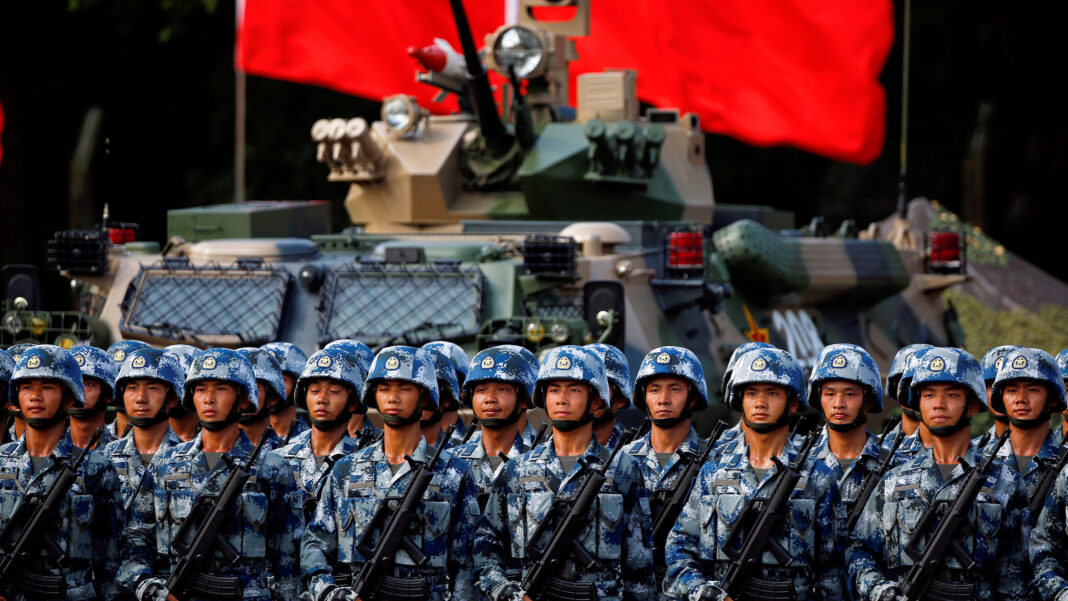China’s arms exports have seen a decline due to defective quality, poor and unreliable performance, which put the buyer countries in precarious situations during the combat. China’s arms exports have shrunken by about a quarter in the past decade. Moreover, the problem of inferior quality weapons is bothering China’s People’s Liberation Army (PLA) as well. According to the Stockholm International Peace Research Institute (SIPRI), arms exports from China declined by 7.8 percent during 2016- 2020 as compared to the previous five-year duration.
Its share in the global market has contracted from 5.6 percent to 5.2 percent. The demand for Chinese arms saw a surge as they were cheaper than those
offered by competitors. It however began shrinking after the Chinese arms failed to perform as expected. “China attracts customers for its military equipment with cutrate pricing and financing, but there are hidden costs — especially when gear malfunctions,” said Cindy Zheng, a researcher at the think tank RAND Corporation. “A lack of technological compatibility with the Chinese military equipment can prove particularly expensive.”
China exports weapons to over 53 countries, which are generally not markets for major arms supplier countries, such as the US, France.34 Pakistan, Myanmar, Bangladesh, and countries in Africa and the Middle East are major importers of Chinese arms. Alexander Vuving, professor at the Daniel K Inouye Asia-Pacific Center for Security Studies, said highlighted the issue of problems in the Chinese military hardware.
“China-made weapons are not just technologically inferior, they also remain untested on the battlefield,” he said.
Myanmar raised concerns over the poor accuracy of the radar on the Chinese jets that it bought. This led Myanmar to ground most of the Chinese jets thanks to the technical malfunctions. Myanmar spent a huge amount to buy these China-manufactured jets but they remained under maintenance even four years after their commissioning.
Nigeria has been forced to send seven of nine Chengdu F-7 fighters to China due to maintenance problems. China’s all-weather ally, Pakistan too faced issues in China-made naval warships. The F-22P frigates produced several technical problems such as engine degradation, defective sensors and the missile system’s incapability to lock on the target. Bangladesh reported problems with the K-8W jet planes it bought from China. These planes encountered problems in firing the ammunition loaded on them. Moreover, Bangladesh expressed concerns over problems in the China-produced Short Range Air Defence Systems and two Ming-class submarines.
Singapore-based maritime security expert Collin Koh said the importer countries are concerned about the lack of combat testing for most Chinese hardware. Political friction with China in the case of integration with non-Chinese systems is another issue. Andrei Serbin, a geopolitical intelligence expert and director of the Argentine think tank CRIES, said “Many countries acquiring Chinese military equipment for the first time are finding that certification standards are lower than in the West, where there are standards of excellence shared by NATO countries, which endorse the certification of technologies. China doesn’t have a system that comes even close to
that.”The low quality of Chinese weapons has become an issue of concern not only for importers but for China’s army as well. “[We must] do a good job in improving the quality of our weaponry,” General Zhang Youxia, first vice-chairman of China’s Central Military Commission told army officials.
A few years ago, PLA National Defense University revealed Chinese army was using inferior bullets developed three decades ago. While China has claimed to have made advancements in military technology, analysts said the Chinese army still uses older and outdated equipment, which was built using old Soviet technology. Beijing-based military analyst Shi Yang said “The large number of relatively outdated weapons also restricted Chinese army’s combat ability.” Experts assert that Chinese weapons are inferior to Western equivalents as Beijing developed its weapon with designs that were licensed, stolen, or reverseengineered.China is often accused of cloning almost every innovation the West has come up with. Military technology and infrastructure are not an exception to it. Experts point at poor domestic innovation and corruption in the
defence industry for the production of inferior military equipment. And thus China could not manage to make arms supplies to major countries.
But now it faces a decline in arms exports.

